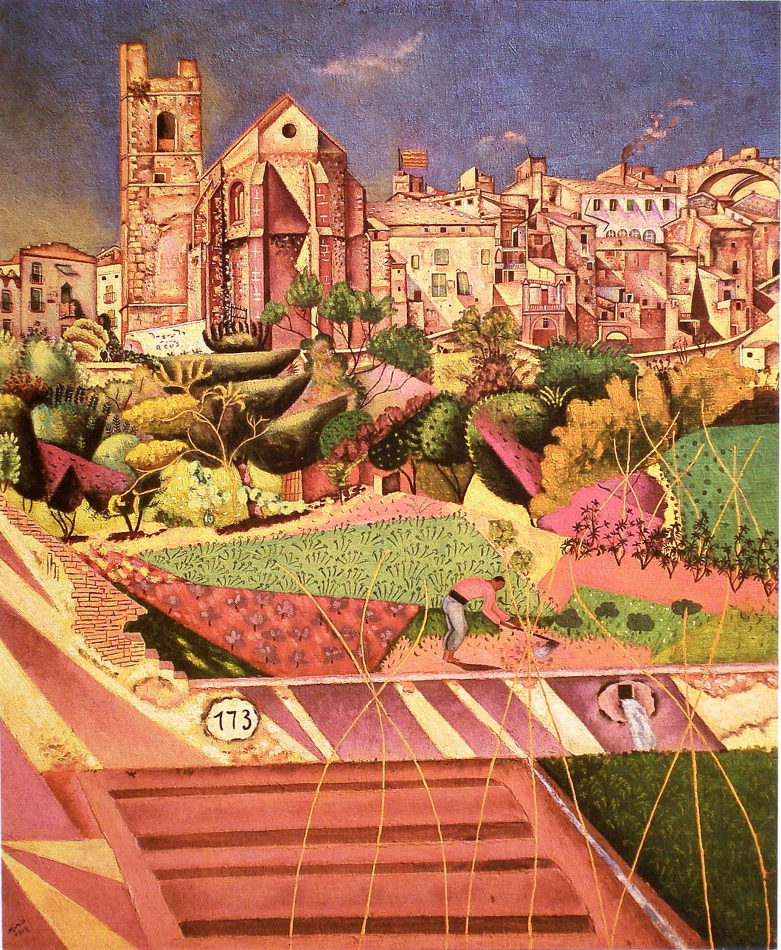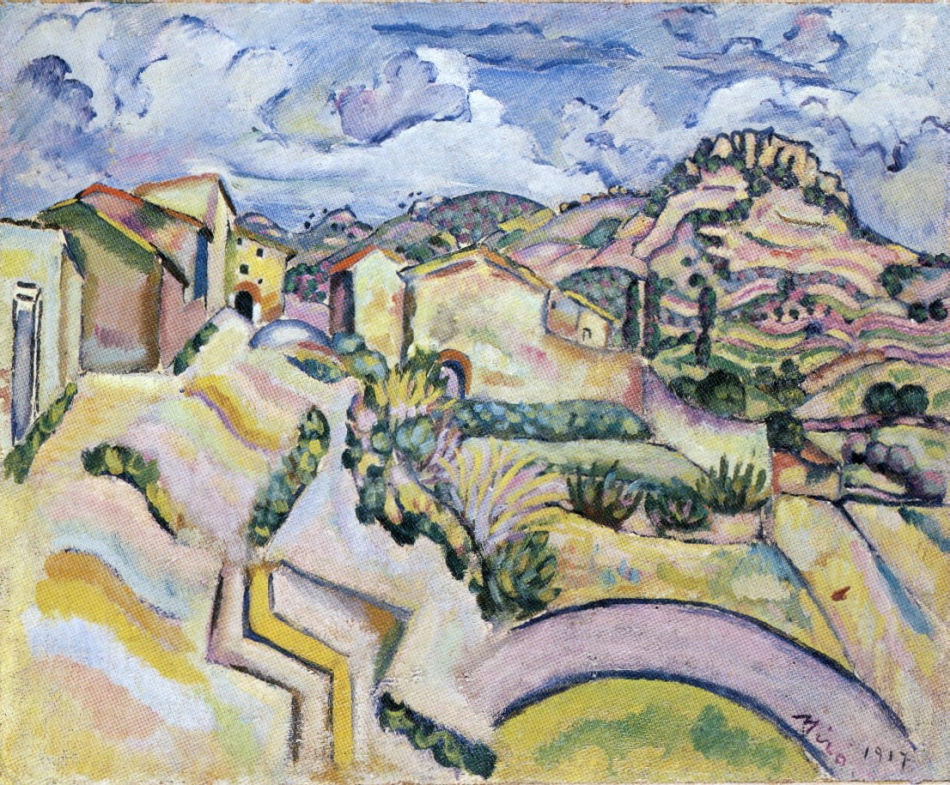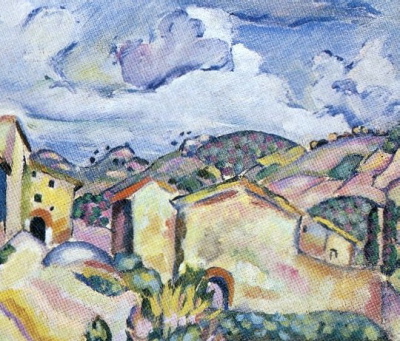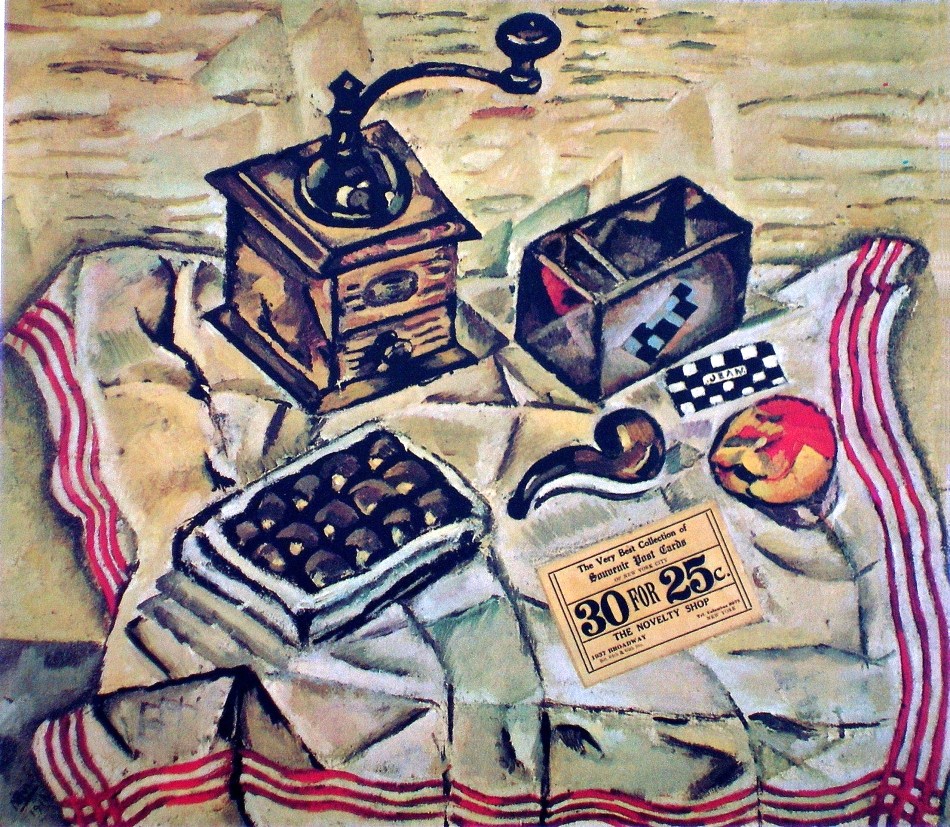A very complex subject and Miro shows an impressive level of sophistication. His journey from here, towards conveying the prime in his mature work is fascinating.
I would like to focus on integration and pauses in this posting which hopefully guide you to many other delights in this impressive composition.
Lets begin with the green and red triangles near the the figure, and how the curve of the figure’s back rhythmically integrates with the red triangle. Now, permit your eye to run upward along the bottom curved edge of the red triangle, to the edge of the black tree above, continuing to the left edge of the building above.
There is another strong integrating movement just above the figure, see detail: 
The strong contrast between the pink and dark green catches your eye and then takes you up to the pink straight edge leading you toward and connecting to the right edge of the church. There are more, and remember they are not meant to be obvious.
Miro’s orchestration of pauses is also very impressive and there are several. I’ll begin with the two ovals, the drain and the one numbered 173. My eye then pauses on the white shape at the base of the tower. From there I note the black windows above, particularly the circle, and because of the light value the shape the circle occupies my eye moves and pauses on the wonderfully considered small square at the right of the painting. As with the integration, the pauses are not meant to hold you, and compete. They are lyrical notes as in music.
There is considerably more to the dance Miro has invited us to enjoy, like the clouds and the vines, your invited!




